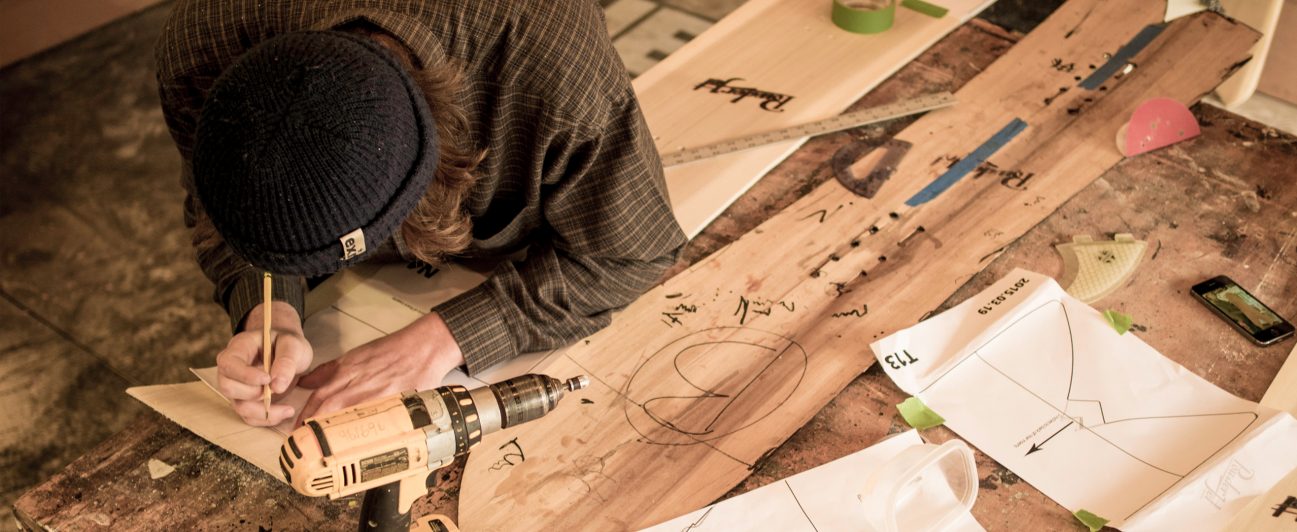Profile
“I’m Not a Company”
Carpentry For the People with PowderJet Snowboards
Top Image Nick Gannaway traces an outline. Photo: Toby Grubb
“Woah, this thing rides crazy!” When Jesse Loomis dusted off and rode his old Burton Elite back in 2008 he rediscovered a special feeling. Pointing all 150 centimeters down a back hill behind his Vermont home, it seemed all the board wanted to do was turn. With little side cut and a squared-off swallowtail to boot, the ‘80s-era board was loose. Loomis left the hill inspired.
Maybe it really was all about the soul turn. No one on the market was making a board like this, how was it be that a piece of almost 30-year-old wood was breathing new life into his riding experience? As a carpenter by trade, Loomis had the technology. He could rebuild that feeling.
Eight years down the road, Loomis has built PowderJet Snowboards into a viable passion project, a throwback board company dedicated to that lost feeling. PowderJet focuses on handcrafted wooden rides with esoteric shapes, prime for bringing a new feel to bottomless powder turns. As owner and solitary builder Loomis turns out every board by hand from his shop in Peru, VT. And now he’s taking it one step further: he’s putting the tools in your hands, and he’s taking the gig on the road.
For two years now Loomis has been hosting build your own board classes for the general public, connecting fresh hands with a few plies of poplar, fiberglass and the opportunity to make something completely your own. These BYOB sessions, which he calls “The Speed Of Sawdust Tour,” produce wildly unique boards that are shaped by those who enroll. Within the last year Loomis has taken The Speed of Sawdust across the country. Bringing in his skills and tools to help other snowboarders build their very own board, Loomis says the classes have given a new bearing to the company. The DIY revolution is here, and Loomis is glad to take the helm.
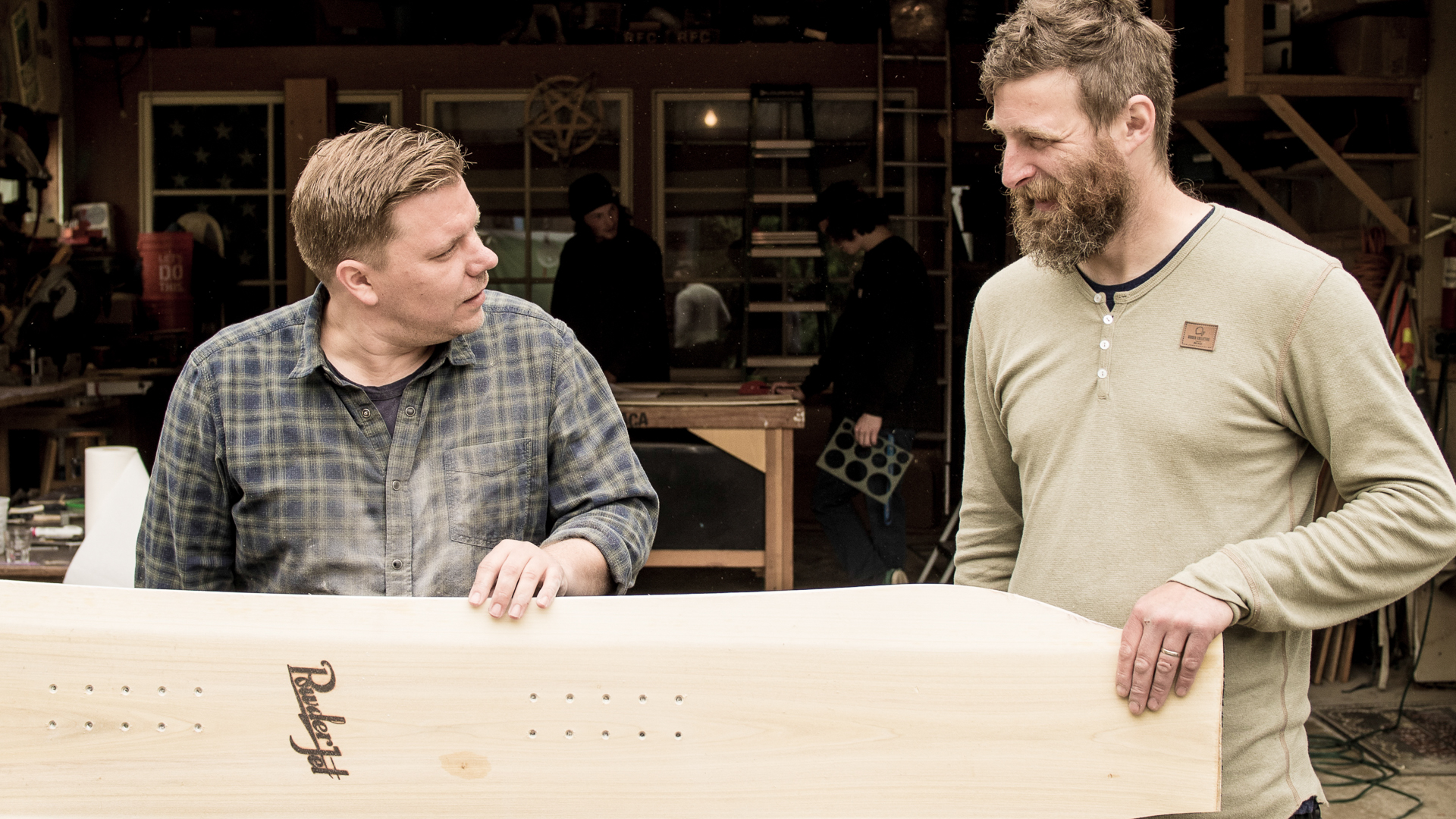
Above Jesse Loomis (right) and Zach Egge (left) discuss a shape on the Speed of Sawdust Tour in Portland, OR. Photo: Toby Grubb.
The Snowboarder’s Journal: Can you tell me your origin story?
Jesse Loomis: I had the idea in March of 2008. I was in the backyard with my kids in Rupert, VT at the time and our backyard was the perfect snowboarding hill. It started with a bunch of woods up on top and opened up to this big field. My two boys were little and we were up sledding the hill because that’s what you do in Vermont. Just on a whim I grabbed my first board, which was a Burton Elite 150. Now I’m like 185 pounds and I’m strapped onto this stupid thing, I started riding it and it just wanted to turn. I’m so far towards the back but it just wanted to swing around. Nobody was making a board like this at all, I thought this thing would be so sick in Vermont because we have crazy tight trees… So I was riding this snowboard from the ‘80s and as a carpenter, seems to me that I should be able to put the pieces together to build a wooden snowboard.
How did it become a viable business?
It’s not going to make me a millionaire. In terms of turning a profit that still remains to be seen, and I’ve never taken it to an investor or anything. I’ve been bootstrapping this thing since 2009 and have a very forgiving and encouraging wife and family. I still work as a carpenter as much as I can, which is nights and weekends, week days once and a while. I’ve never wanted to get investors, I just wanted to be able to maintain complete control of this… for better or worse. I’ve wanted to build it organically over the years.
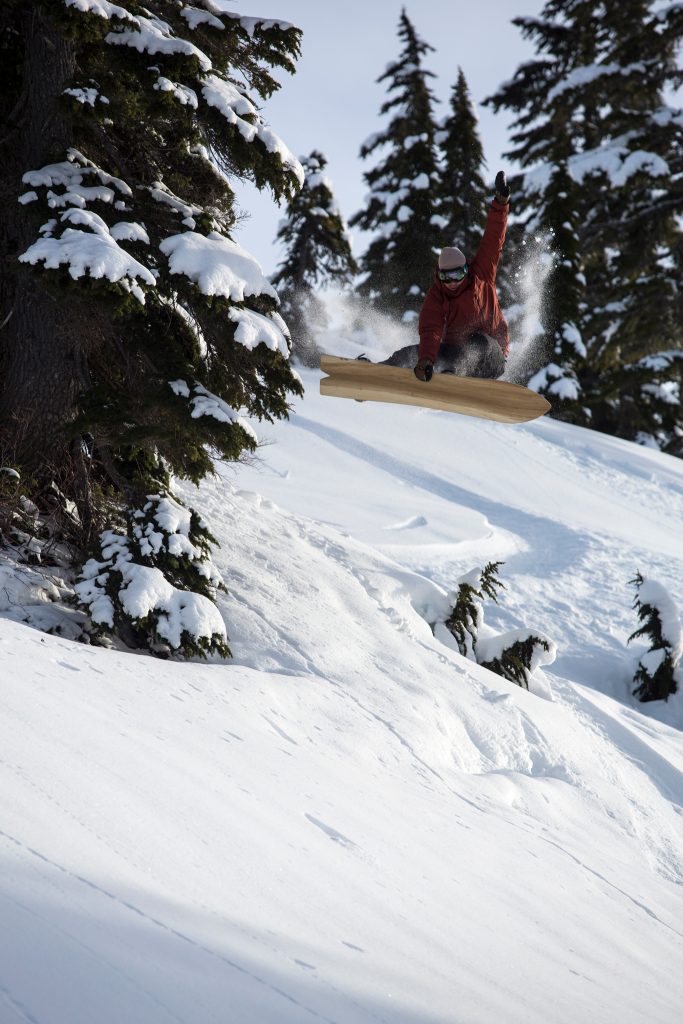
Above Jesse Huffman ripping a Powder Jet at Mt Baker, WA. Photo: Shem Roose.
A lot of your shapes take from retro designs, like asymmetrical boards and wild swallowtails and big floaty noses. Is that personal preference or is that something the industry is driving?
I think the industry doesn’t know what the hell it wants. I’m not a company, I’m a dude. So what the snowboard industry does doesn’t really affect me in any way. I live in southern Vermont, so far away from anyone in the industry, and am making classes for people to build boards. Those nose and tail shapes are mostly suggestions for people who want to take a class, and a lot of people go off of that and don’t stick to that script. Some [templates] are only there because we think they look awesome.
Take us through the process of laying up a PowderJet.
The whole process starts with ordering materials, which I seem to wait until the last minute to do. Then once materials are in, I cut out the P-Tex base, glue the edges on, punch in couple of inserts to align it up to the mold in the press, then I have a bunch of flat laminated poplar that has holes cut into it for the inserts. So it’s just P-Tex, sheet of fiberglass, two laminates, one more laminate with the inserts in it, another sheet of fiberglass and then the top sheet. Slide that into the press, crank up the pressure, turn up the heat, let it cook for 20 minutes and then turn it off and let it cool. Pull it back out, just like any other board.
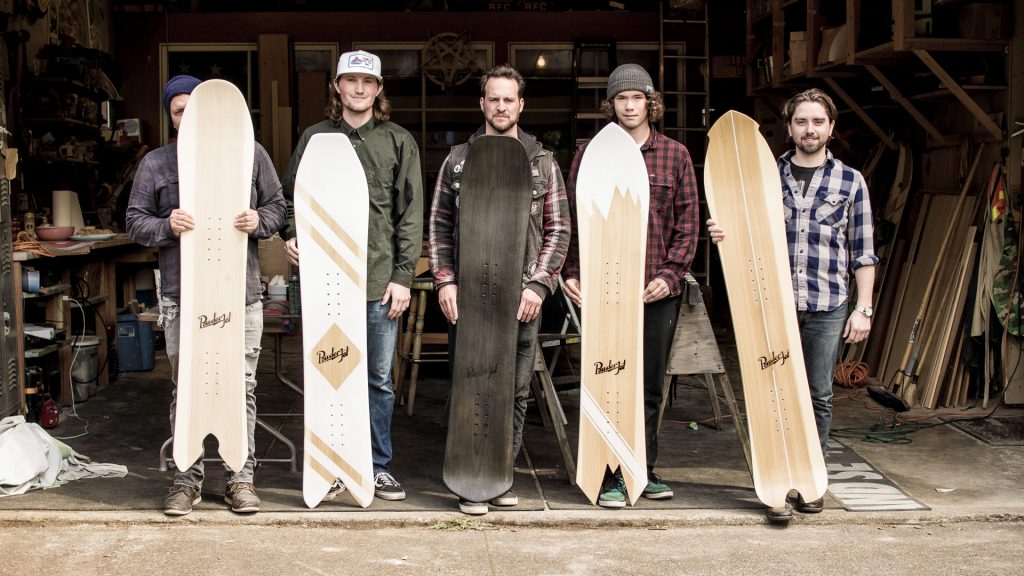
Above Experimental shapes in Portland, OR on the Speed of Sawdust Tour. From left to right: Zach Egge, Nick Gannaway, Toby Grubb, Kyle Teal and Dan Forbes. Photo: Toby Grubb.
You’ve helped bring a lot of boards into the world—you’ve done over 30 classes now?
I have, it’s really weird. And the funny thing is that they all have the PowderJet stamp on it. Depending on your skill set, some people come in who are woodworkers and bring their own tools and I’ve had people make some super tight looking boards, and some of them come through and at the end of the class I’m like ‘I guess it looks cool.’ It’s out of my hands, but the people that build them are psyched on them. It’s out there with my logo on it, and I love all the people who take the class.
So what was the inspiration for the DIY classes?
A few years ago we moved our shop down to the coast of Maine to share a shop with Grain surfboards, the guys I’ve been snowboarding with since I was in my teens and 20s. We decided to see how it lasts for five years, just see how it goes. So we moved down the Grain, put the whole press in and everything, and one of Grain’s main things to do was build-your-own surfboard classes—that’s where I got the idea to do classes. I copied what Grain does, it seemed to be working for them, and I was pretty sure it was possible to do it… Ever since then it’s all been about classes, and the chance to do them. We went out to San Diego and did one at the Patagonia store in Cardiff. We’re going to do one in Denver this year, possibly in Utah, another one in New York.
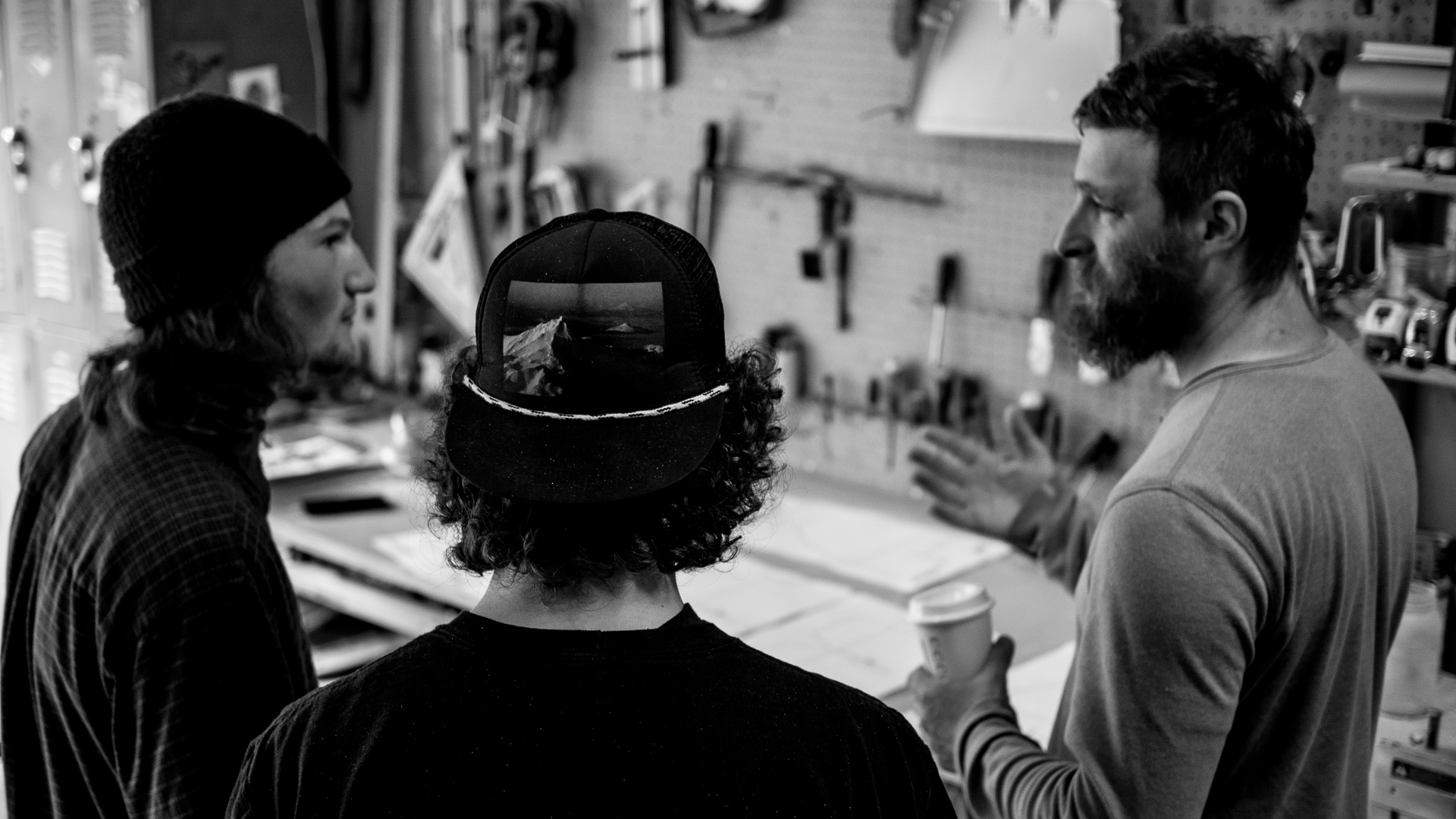
Above Loomis talking shop with Nick Gannaway and Kyle Teal. Photo: Toby Grubb.
You’re building a traveling snowboard factory?
I need to get a trailer and I’m eyeing a couple of options, and I need a big enough truck to haul it around, but it’s basically a mobile classroom. Maybe a tent setup outside of it. I think there’s room for this little Speed of Sawdust thing to grow. We live in a pretty remote location, so if you want to take a class but you don’t want to travel to do this, the option to be able to bring it to you helps. The trailer will have a little coffee bar-slash-beer thing for afterwards, and we’ll bring it to different ski areas and just have a guerilla party out in the parking lot.
Next steps for PowderJet? Can the woodshop keep up with demand?
We’re not focused on wholesale orders. That’s not necessarily how PowderJet ever needs to go. I’d like to have some boards in some smaller shops, but I’d really like to just keep doing the classes and doing the single orders. We’d just like to get out more. We’ve been in Maine the past two years and this year with the trailer we’ll be able to do make our presence known a bit more.
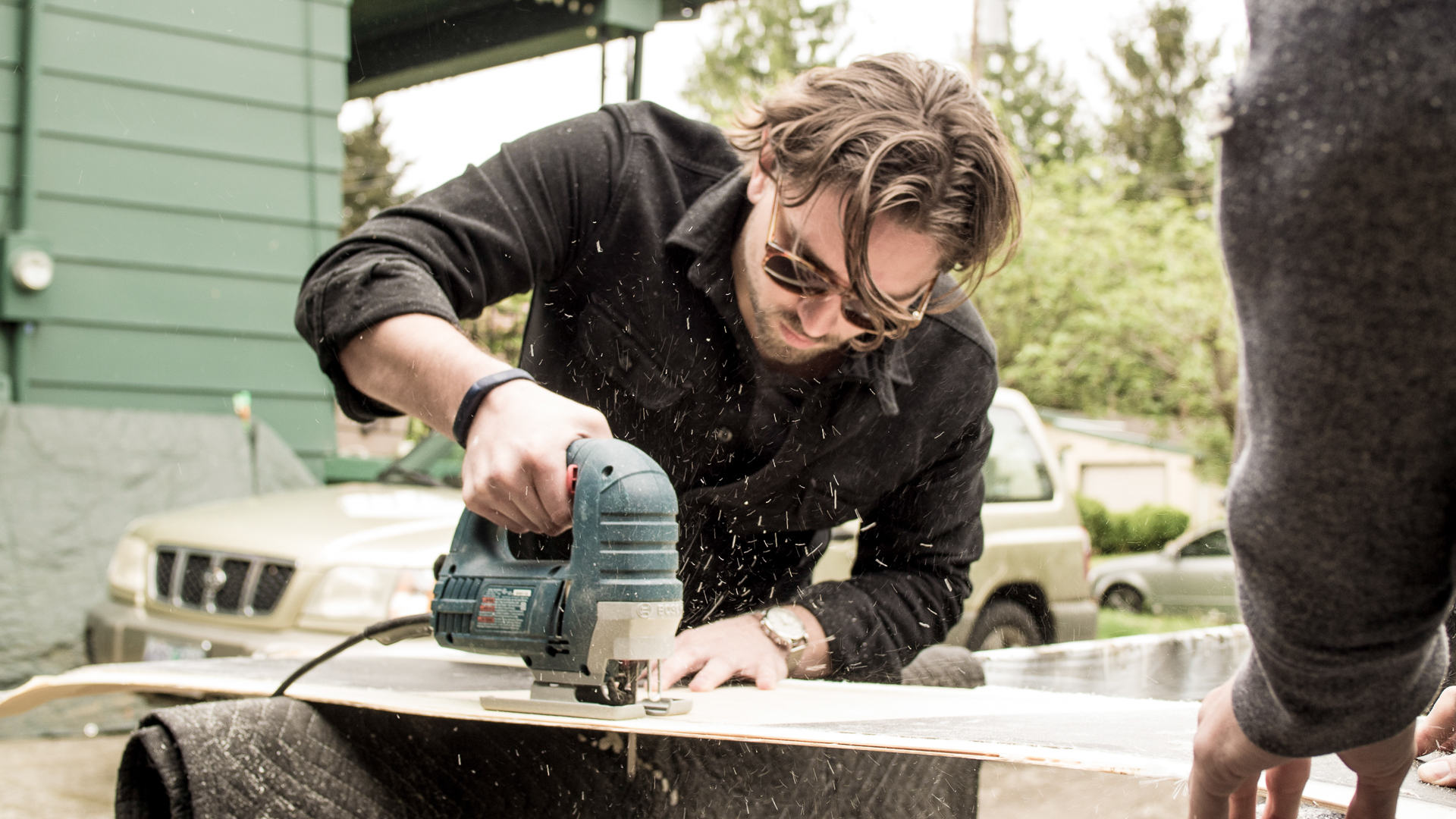
Above Dan Forbes digging into a snowboard of his own design. There’s a certain satisfaction of building something functional with your own two hands. Photo: Toby Grubb.
Got any parting wisdom, wild accusations or ruminations on snowboarding?
I think people take snowboarding pretty seriously, and I both love and hate how serious it can be. Really it’s just for fun, but also for me it was the lifestyle that defined me as a young man and now obviously how I identify as well. So there’s a lifestyle part of snowboarding that I think people are a little worried about being watered down too much. That’s honestly part of the reason I started doing PowderJet. Seeing snowboarding in the Olympics on T.V., that’s what people’s image of snowboarding and snowboarders is, like the über-athletes. I feel like PowderJet is more about the everyday athlete, the weekend warrior. We’re for people who are really into snowboarding, and this is a fun way for people to involve themselves more with the sport.
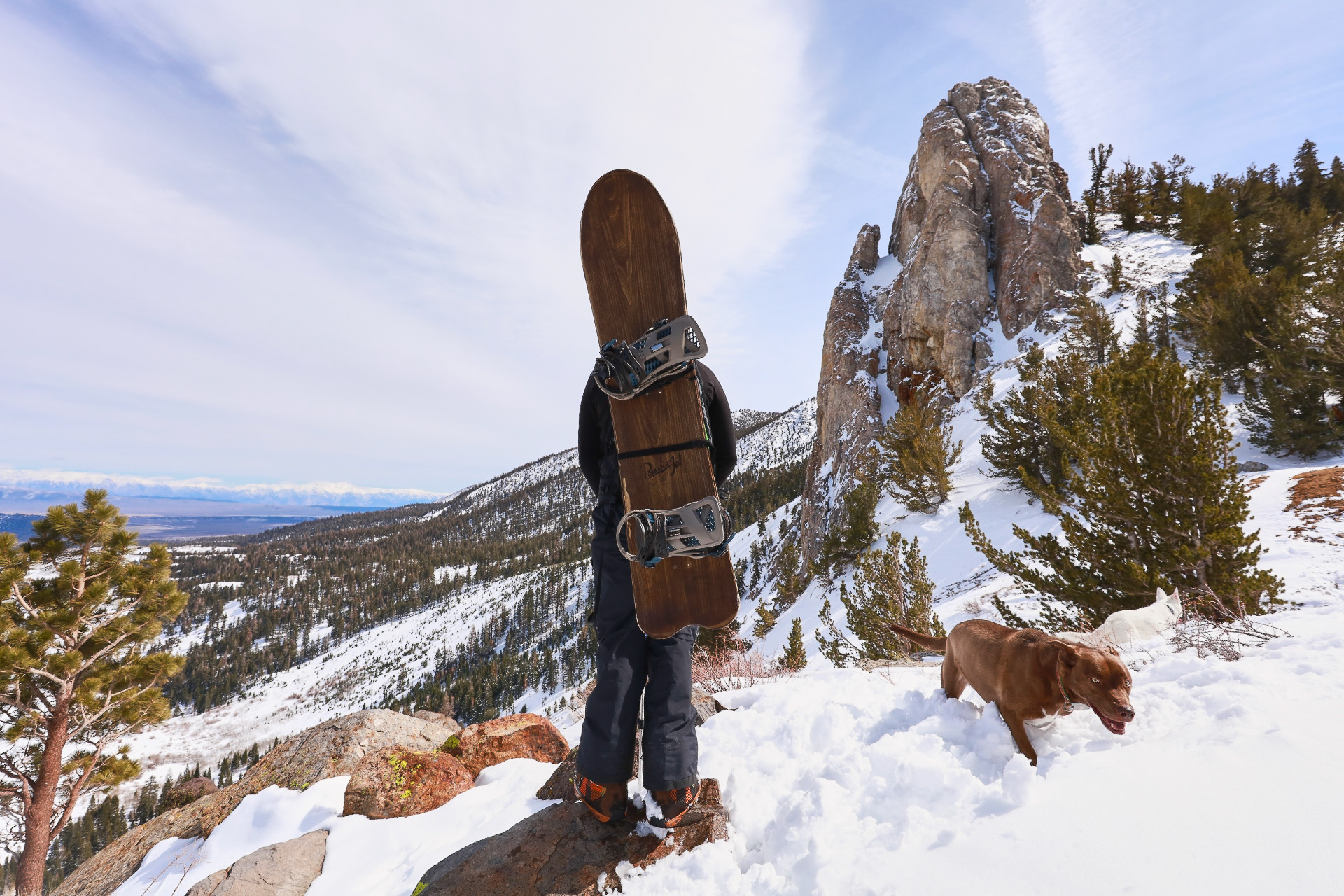
Above Scott Wilson and his hand-carved Powder Jet in the Mammoth Mountain, CA backcountry. Photo: Pascal Shirley.
